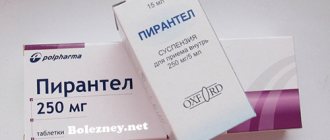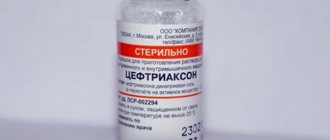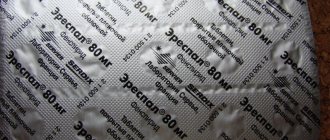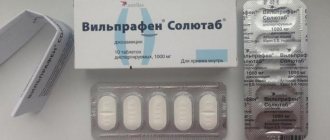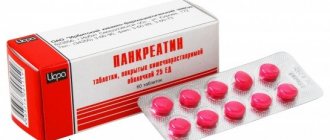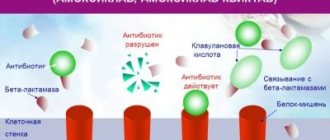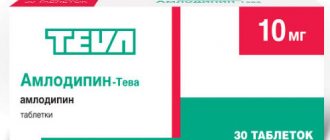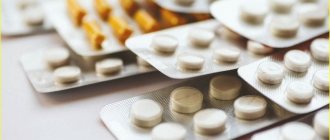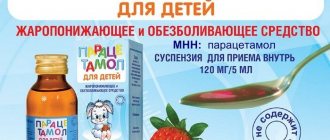Category: Published 05/10/2017 · Comments: · Reading time: 5 min · Views: 2,673
A modern, highly effective pharmacological agent with a wide range of antibacterial effects is the drug “Sumamed”. The instructions for use indicate that the medicine has proven itself excellent in the treatment of many infectious pathologies.
How to prepare a suspension
The medicine is available in various dosages.
You can purchase 100 mg/5ml, 200 mg/5ml. The powder is white, the package contains a bottle, a measuring spoon, and a syringe for dosing. To obtain a solution, prepare water. It is advisable to use cleaned or baby food for cooking. Parents need to follow the instructions. The dosage and dilution method depend on the weight, age of the baby, and the dosage of the drug itself.
- To prepare a suspension of Sumamed 100 mg/5ml, you need to take a special syringe for measurements and fill it with boiled water cooled to room temperature. It is worth adding 12 ml of water for all 100 mg of powder. The result should be a medicinal solution. It must be shaken well so that the suspension is free of lumps. Before each use, it is necessary to remove the medicine from the refrigerator in advance to make it warmer and shake it. This solution is stored for no more than 5 days;
- If the pediatrician prescribed Sumamed powder 200 mg/5ml/15ml, it should be diluted in the same way. You will need boiled water and a measuring syringe, add a volume of 12 ml and mix thoroughly with the powder; An increased dose of 200 mg does not mean that it is necessary to increase the amount of water. Sumamed 100 mg/5 ml should be diluted for the treatment of small patients weighing up to 13 kg in the same way as Sumamed at a dosage of 200 mg/5 ml. A higher dose of the drug indicates a larger amount of antibacterial agent per 5 ml dose.
For children whose weight exceeds 13 kg, doctors recommend diluting the Sumamed Forte suspension 200 mg/5ml/15 ml. The drug requires an increased dose of antibiotic in one dose. To dilute, you need to add water, as in previous methods, in an amount of 12 ml. Shake the bottle well and take orally as directed by your doctor. The prepared suspension should be stored for no more than 5 days.
The medicine is used for complicated forms of throat diseases, inflammatory processes in the bronchi and lungs. The suspension should be used to treat children from six months to 3 years.
The standard dosage includes:
- one-time dose of 2.5 ml, if the child’s weight varies from 10 to 14 kg;
- from 15 to 24 kg of weight, the dose is doubled and is 5 ml per dose;
- 7.5 ml is prescribed to a patient weighing from 25 to 34 kg;
- From 35 to 44 kg take 10 ml, once a day;
- If the child's weight is above 45 kg, a dosage of 12.5 ml should be used once for 3 days.
For babies whose weight does not exceed 10 kg, pediatricians prescribe the drug in the form of a suspension of 100 mg/5 ml. It contains less antibiotic per dose than 200 mg/5ml. For adults, as a rule, the medicine in the form of a suspension is not prescribed. An exception may be a person’s low body weight, not exceeding 50 kg. In such a situation, you should use Sumamed Forte powder 200 mg/5ml.
If the Sumamed suspension is not suitable for treating the baby, it can be replaced with other analogues. They are also available in liquid form. Some of them have the advantage of not needing to be diluted with water. The most popular analogues of Sumamed, which can be used to treat young patients, include:
- Azimed (complete analogue, in the form of powder for dilution);
- Azitro Sandoz (also in powder form, more expensive, manufactured in Germany);
- Hemomycin (complete analogue, cheaper in cost, in powder form);
- Amoxiclav (a synthesized drug, available in syrup form for the treatment of children).
You should not choose an analogue of Sumamed in the form of a ready-made syrup just because this will avoid preparing the suspension yourself. Any recommendations for the use, discontinuation or replacement of Sumamed with an analogue should only be given by the attending physician.
Sources:
Vidal: https://www.vidal.ru/drugs/sumamed__786 GRLS: https://grls.rosminzdrav.ru/Grls_View_v2.aspx?routingGuid=5b4a2b6f-bdfe-4437-a8d7-6db45ea45782&t=
Found a mistake? Select it and press Ctrl + Enter
Drug interactions
"Sumamed" from the manufacturer is one of the antibiotic drugs that is a representative of the macrolide category. The pharmaceutical drug in question is famous, first of all, for the fact that it has not just a strong, but a truly powerful antimicrobial effect. This effect makes it possible to use this medicinal drug in the fight against almost any microscopic organisms.
Despite the fact that Sumamed is a good remedy, it must be used with great caution. In this case, special attention must be paid to its interaction with other medications. It must be remembered that Sumamed takes longer to be absorbed when used in parallel with antacids, which contain substances in the form of magnesium and aluminum. It is in this regard that in order for both medications to have the necessary effect, they must be taken with a certain time difference of approximately one or two hours.
Great caution should also be taken when using this medication in combination with a pharmaceutical drug such as, for example, Warfarin. If the patient was prescribed “Sumamed” together with “Ergotamine” or “Dihydroergotamine”, then one must prepare for the fact that the latter drugs can cause intoxication at any time.
You cannot use the product in question simultaneously with Heparin. The interaction of these two drugs can lead to very serious health problems. And one more thing: when using the described medication, you should under no circumstances drink alcoholic beverages, because alcohol is incompatible with it. Thus, during the treatment process it is imperative to maintain a healthy lifestyle.
special instructions
Patients with diabetes mellitus and those on a low-calorie diet should take into account that Sumamed forte contains sucrose (0.32 bread units per 5 ml of suspension).
If you miss a regular dose, take the missed dose as soon as possible, and take subsequent doses at least 24 hours apart.
Due to the possible development of severe liver failure and acute liver dystrophy, Sumamed forte is used with caution in patients with mild to moderate liver dysfunction. If there are symptoms of liver dysfunction (dark urine, rapidly increasing asthenia, bleeding tendency, jaundice, hepatic encephalopathy), treatment with the drug should be stopped and the functional state of the liver examined
If there are symptoms of liver dysfunction (dark urine, rapidly increasing asthenia, bleeding tendency, jaundice, hepatic encephalopathy), treatment with the drug should be stopped and the functional state of the liver should be examined.
During therapy with azithromycin, as in the case of the use of other antibacterial agents, it is necessary to regularly examine the patient for the presence of resistant strains and signs of superinfections, including fungal ones.
Sumamed forte is not recommended for long-term use, since the pharmacokinetics of the drug allows the use of a simple and short dosage regimen.
Long-term therapy may lead to the development of pseudomembranous colitis (caused by Clostridium difficile) in the form of mild diarrhea or severe colitis. If diarrhea occurs caused by taking antibiotics, as well as 2 months after the end of treatment, it is necessary to exclude pseudomembranous colitis. It is not recommended to use drugs that inhibit intestinal motility.
With the use of azithromycin, exacerbation of myasthenia gravis or the development of myasthenic syndrome is possible.
Impact on the ability to drive vehicles and complex mechanisms
If, while taking Sumamed forte, undesirable side effects occur on the part of the organ of vision or the nervous system, you should be especially careful when performing types of work that require a high concentration of attention and a quick psychomotor reaction.
Sumamed - contraindications for use
Like any medicine, Sumamed cannot be used in all cases. The drug requires a prescription from a doctor, who determines whether the patient can be prescribed Sumamed, the contraindications for which are as follows:
- increased sensitivity to macrolides;
- severe liver diseases.
Conditions in which the antibiotic is used with caution are separately noted:
- treatment of newborns (there is no extensive clinical experience in using the product);
- period of pregnancy and lactation.
Sumamed forte instructions for use dosage and method
Sumamed forte is taken orally once a day separately from meals (1 hour before or 2 hours after meals). The suspension must be washed down with water to swallow the remaining drug completely.
The contents of the bottle should be shaken thoroughly until a homogeneous suspension is obtained before each use. If more than 20 minutes have passed after shaking the bottle and you need to draw the required volume of the drug, the suspension must be shaken again and the required volume taken.
The calculated dose is measured using a measuring spoon with a capacity of 2.5 ml or 5 ml, or a dosing syringe with a capacity of 5 ml and a division value of 1 ml, placed in a cardboard pack along with the bottle and instructions.
After each use, the measuring spoon and syringe (disassembled) must be rinsed with running water, dried and stored in a dry place until they are needed for the next dose of Sumamed forte.
To prepare a suspension with a nominal volume of 15 ml, carefully add 9.5 ml of clean boiled water to the contents of the bottle using a dosing syringe. Then the bottle is shaken until a homogeneous suspension is formed. The resulting volume of suspension will be approximately 20 ml (approximately 5 ml more than the nominal volume). This is necessary to compensate for the inevitable losses of the drug during dosing. The prepared suspension should be stored for no more than 5 days at room temperature not exceeding 25 °C.
To prepare a suspension with a nominal volume of 30 ml, add 16.5 ml of water to the contents of the bottle and shake until a homogeneous suspension is formed. The resulting volume of suspension will be approximately 35 ml (approximately 5 ml more than the nominal volume). This is necessary to compensate for the inevitable losses of the drug during dosing. The prepared suspension should be stored for no more than 10 days at room temperature not exceeding 25 °C.
To prepare a suspension with a nominal volume of 37.5 ml, add 20 ml of water to the contents of the bottle and shake thoroughly until a homogeneous suspension is formed. The resulting volume of suspension will be approximately 42.5 ml (approximately 5 ml more than the nominal volume). This is necessary to compensate for the inevitable losses of the drug during dosing. The prepared suspension should be stored for no more than 10 days at room temperature not exceeding 25 °C.
The recommended dose of Sumamed forte for infectious and inflammatory diseases of the respiratory tract, soft tissues and skin is 10 mg/kg body weight once a day for 3 days (total course dose – 30 mg/kg body weight).
Depending on body weight for children, Sumamed forte is used in the following single doses:
- children weighing from 10 to 14 kg – 100 mg (2.5 ml suspension);
- children weighing from 15 to 24 kg – 200 mg (5 ml suspension);
- children weighing from 25 to 34 kg – 300 mg (7.5 ml suspension);
- children weighing from 35 to 44 kg – 400 mg (10 ml suspension);
- children weighing more than 45 kg - 500 mg (12.5 ml suspension) (dose prescribed for adult patients).
For patients with pharyngitis/tonsillitis caused by Streptococcus pyogenes, Sumamed forte is prescribed at a daily dose of 20 mg/kg body weight for 3 days (total course dose is 60 mg/kg). The maximum daily dose of azithromycin is 500 mg.
For erythema migrans and Lyme disease, on the first day of treatment, 20 mg/kg body weight is prescribed once, and then (days 2–5) - 10 mg/kg body weight per day once (the total course dose is 60 mg/kg).
In children weighing up to 10 kg, powder should be used to prepare a suspension for oral administration of Sumamed with a concentration of 100 mg/5 ml.
In case of impaired renal function (glomerular filtration rate from 10 to 80 ml/min), mild or moderate impairment of liver function, as well as in elderly patients, no dose adjustment is required.
In elderly patients, Sumamed forte is used with caution due to the possible presence of proarrhythmogenic factors that increase the risk of developing arrhythmias and cardiac arrhythmia.
Composition and release form
Manufacturers produce the medicine in the form of capsules, tablets and powder for preparing a suspension.
Sumamed tablets Covered with an enteric coating. Azithromycin content in one tablet - 125 mg, 250 mg, 500 mg, 1000 mg plus excipients
- calcium hydrogen phosphate anhydrous,
- magnesium stearate,
- corn starch,
- microcrystalline cellulose,
- pregelatinized starch,
- hypromellose.
The package may contain from 1 to 6 tablets packed in a blister (the lower the dosage, the more tablets).
The powder form is used for children or when taking tablets is not possible. White powder with a yellow tint and a strawberry scent is packaged in a 50 ml plastic bottle complete with a measuring spoon or syringe for precise dosing.
The main active ingredient is also azithromycin, the digestibility of which is improved by excipients: titanium and silicon dioxides, sucrose.
The suspension can have a dosage of 100 mg/5 ml or 200 mg/5 ml (the so-called “Sumamed Forte”).
The drug is a prescription drug and is dispensed from pharmacies as prescribed by a doctor.
Forms of release of a pharmacological agent
The composition of the drug "Sumamed" includes azithromycin. This substance belongs to azalides and is also an active component of the medication. "Sumamed" is the commercial international name of the drug. It should be noted that this drug is an antimicrobial drug that is widely used in medicine. Penetrating into the microbial cell, the product inhibits protein reactions. The main feature of the drug “Sumamed” is its high rate of penetration into infected organs and a fairly long period of action. It is these factors that allow you to take the medicine only once a day. As for the forms of release of this product, they are quite diverse.
This is due to the widespread use of the drug. The drug "Sumamed" for children, the price of which depends on the dosage of the active substance, is available in the form of a suspension, as well as in the form of syrup.
In addition, the medicine is sold in pills coated with a special coating. One pack can contain 3 or 6 tablets. The pills have a bluish-gray tint, a round shape and are marked with the name of the manufacturer imprinted on their surface.
Also, Sumamed antibiotics for school-age children are available in capsules. One pack usually contains six pills. The capsules themselves are hard and made of biosoluble substances. They are blue-gray in color, just like the tablets. Inside each capsule there is a white-cream powder.
In addition, the drug is sold in powder form, which must be diluted with liquid. The original form is a regular structured mass that has a berry aroma and corresponding taste. In addition to the active ingredient, this powder contains flavoring, food coloring, and a sweetener. The drug is sold in a special container in which it can be diluted. The set also includes a special spoon with measuring divisions. In the state of a colloidal solution, the drug “Sumamed” for children, reviews of which are mostly positive, has a light cream color.
Pharmacological properties
This bacteriostatic antibiotic from the series of macrolides and azalides is widely distributed in the pharmaceutical market today. It has a wide spectrum of antimicrobial effects. The mechanism of operation of the main component of azithromycin is directly related to the suppression of protein synthesis of microbial cells. By binding to ribosomes, the drug inhibits peptide translocase at the translation stage, suppressing protein synthesis, and at the same time slowing down the reproduction and growth of pathogenic bacteria. In high concentrations it can produce a bactericidal effect.
The drug "Sumamed" from the manufacturer PLIVA is active against a number of gram-negative, gram-positive, intracellular, anaerobic and other microorganisms. It must be taken into account that some parasites may initially be resistant to the effects of this antibiotic and are able to acquire immunity to it. In most cases, “Sumamed” is active against aerobic bacteria:
- To methicillin-sensitive strains.
- To penicillin-sensitive strains.
- To aerobic gram-negative bacteria and other microorganisms.
Parasites that are particularly capable of developing resistance to this drug are primarily gram-positive aerobes. Initially, resistant microorganisms are strains of staphylococcus that exhibit good immunity against macrolides.
Application and dosage
The optimal option for treating bacterial infections in children under three years of age is considered to be a suspension; for older children, both capsules and tablets are used.
Suspension
Sumamed suspension is the most convenient for treating children compared to tablets
The advantages of using the Sumamed suspension in young patients are obvious: it has a liquid consistency, resembles syrup, so the child does not have problems swallowing, as, for example, in the case of tablets or capsules. The suspension has a pleasant taste and smell. Choose what you like best – cherry or banana flavored syrup!
At the same time, this form of release allows you to calculate the exact dosage of the drug, which is very important for the youngest patients, because their treatment requires minimal concentrations of the active substance. The dosage is calculated by the doctor based on the child’s age, weight and course of the disease.
Preparing a suspension from powder is not at all difficult, just follow the following rules:
- use chilled boiled water;
- to dilute, add water to the bottle with the powder in the required amount and shake until smooth;
- The prepared suspension, both ordinary and forte, can be stored for no more than 5 days.
“Sumamed Forte” in the form of a suspension is prepared in a similar way, its dosage is twice the classical one and is 200 mg per 5 ml. For children under the age of one year, the drug is given using a measuring syringe, for older patients (after one year) - with a measuring spoon.
Although the doctor determines the dosage, in most cases the calculation is simple: the medicine should be given once a day, 10 mg of suspension per 1 kg of the baby’s weight. For a child weighing 10 kg, the daily dose is 100 mg.
Tablets and capsules
Sumamed tablets or capsules are not suitable for the treatment of newborns
Used for patients over three years of age. The dosage is calculated individually, according to the instructions and recommendations of the doctor. However, there are general patterns:
- for a child weighing from 18 to 30 kg, the daily dose is 250 mg, that is, it is recommended to take two tablets (morning and evening) of 125 mg each;
- for children weighing from 31 to 44 kg, the recommended dose is 375 mg per day, that is, three tablets of 125 mg.
The minimum course of treatment is three days.
Capsules are recommended for use by children over 12 years of age and adults.
It is advisable to drink both tablets and capsules an hour before meals or 2 hours after meals with plenty of water.
When is Sumamed prescribed?
Indications for the use of this drug are as follows:
- The presence of sinusitis, pharyngitis, tonsillitis in patients.
- The appearance of inflammation of the middle ear and other bacterial infections that occur in the hearing organs, which are provoked by microscopic organisms that react to this medication.
- The occurrence in patients of bronchitis of infectious etiology, which occurs in an acute form.
- Against the background of chronic bronchitis during periods of exacerbation.
- In case of pneumonia, including in the case of an atypical form of the disease.
- The presence of diseases of the urinary organs, which differ in microbial origin (cervicitis, urethritis).
- When the stomach and intestines are damaged by Helicobacter.
How to use Sumamed capsules and other forms of medication correctly according to the instructions for use?
Application area
The spectrum of action of the bacteriostatic drug “Sumamed” is quite wide. The active substance that forms the basis of the drug is called azithromycin.
Azithromycin is an antibiotic of semi-synthetic origin, well suppressing infections - pathogens:
- Upper respiratory tract and ENT organs. Infection with bacteria usually leads to diseases such as tonsillitis, sinusitis, otitis media, pharyngitis and laryngitis.
- Lower respiratory tract. This may include an inflammatory process in the bronchi, exacerbation of the chronic course of pneumonia, as well as pneumonia of an atypical form.
- Skin. For example, secondary infected dermatoses (skin diseases), impetigo and erysipelas.
- Urinary system.
The minimum dose of azithromycin inhibits the vital activity of bacteria; optimal dosages destroy them.
Indications for antibiotic use
The Sumamed suspension is effective against inflammatory processes caused by bacterial infection. These include:
- Infections of the nasopharynx and upper respiratory tract - tonsillitis, pharyngitis, tonsillitis, sinusitis, sinusitis, frontal sinusitis, otitis media;
- Infections of the lower respiratory tract – tracheitis, laryngitis, bronchitis, pneumonia;
- Infectious diseases of soft tissues and skin - erysipelas, impetigo, secondary bacterial infection in atopic dermatitis and eczema, acne;
- Erythema migrans;
- Infections of the genitourinary system - cystitis, urethritis, pyelonephritis, cervicitis and others.
Taking antibacterial tablets is justified for the treatment of infectious diseases whose pathogens are sensitive to azithromycin.
What does this form of medicine treat:
- Diseases of the ENT organs and upper respiratory tract (sinusitis, pharyngitis, tonsillitis, sinusitis, tracheitis, otitis media);
- Lower respiratory tract infections (bronchitis in acute and chronic forms, inflammation of the bronchi caused by atypical microflora);
- Bacterial damage to the genitourinary system (urethritis, cercivitis, prostatitis, inflammation of the cervix);
- Skin infections , soft tissue damage (acne, impetigo, erysipelas, dermatitis complicated by secondary infection).
"Sumamed" is also used at the initial stage of Lyme disease (tick-borne borreliosis), which is characterized by the appearance of skin erythrema.
Instructions for use
How to take the suspension?
To prepare liquid medicine, use a measuring syringe. With its help, take the required amount of water (it is noted in the instructions for the powder), pour it inside the bottle, close it with a stopper and shake vigorously. Since the active substance settles to the bottom of the bottle over time, the medication must be shaken again before each use.
The suspension is taken once a day in a dosage that must be calculated by the doctor taking into account the child’s weight and his illness. The medicine is taken either after meals (about 2 hours) or an hour before any meal. The suspension application interval should be 24 hours.
You can give medicine to your child directly from a dosing syringe, drawing up the suspension to the desired level. Also in some packages there is a measuring spoon that allows you to take 2.5 and 5 ml of medicine. It is not recommended to further dilute the prepared suspension with water. If such a drug is too sweet for the child, it is better to let him swallow the medicine first, and then offer some clean water to wash the drug down. The syringe and spoon must be washed and dried after taking the medication.
The dose of the drug per day for a specific child must be calculated separately. If a small patient has an infectious disease of the ENT organs, skin or respiratory tract, then for every kilogram of his weight you need 10 mg of the active component. This amount of medication is taken for 3 days. For example, if a baby weighs 12 kg, then he is prescribed 120 mg of azithromycin per day, which corresponds to 6 ml of suspension per dose and 18 ml of medication for the entire course of therapy. Such a child can also be given Sumamed Forte - its single serving, taking into account the double amount of azithromycin, will be only 3 ml.
If the cause of the disease is streptococcus pyogenes, the medication is also prescribed for a 3-day course, but the single/daily dose will be 20 mg/kg. For borreliosis, Sumamed is used for 5 days, while on the first day the child must take the medicine at the rate of 20 mg/kg, and for the remaining period of treatment, the daily dose is calculated by multiplying the patient’s weight by 10 mg.
How are solid forms prescribed?
Dissolving tablets can be swallowed and washed down with water, or you can dissolve one tablet in 50 ml of water and give the child this liquid medicine to drink. Coated tablets and capsules should be swallowed without biting, with clean water.
Any of these variants of Sumamed is taken once a day, and the single dose and duration of treatment depend on the diagnosis, the age of the child and his weight. In most cases, the drug is prescribed at the rate of 10 mg of azithromycin per 1 kg of patient weight and is used at this dose for 3 days in a row:
- If the child’s weight is from 18 to 30 kg, he is given 2 dispersible tablets of 125 mg or 1 dispersible tablet of 250 mg at one time. Also, such a patient can be given 2 coated tablets of 125 mg, if he is able to swallow them without chewing.
- If a child weighs 30-45 kg, then he needs 375 mg of azithromycin per dose, which corresponds to three soluble tablets of 125 mg or 1.5 tablets of 250 mg (they can be divided according to risk). In addition, a patient with this body weight can take three 125 mg coated tablets at once. Typically, patients 7-8 years of age and older do not have problems swallowing this Sumamed.
- If the child’s weight is more than 45 kg or he is already 12 years old, then a single dose of the medicine is considered to be 500 mg of azithromycin, that is, he can be given 2 capsules of Sumamed at once, one coated tablet of 500 mg or one dispersible tablet of 500 mg. If forms with a lower content of azithromycin are used, then they are drunk in larger quantities to get the required dose, for example, if 125 mg coated tablets are purchased, the teenager must swallow 4 of them at once.
If infected with streptococcus pyogenes, chlamydia or borrelia, the dose and duration of treatment will be different. The maximum dosage of Sumamed per day for children under 12 years of age is 500 mg.
Contraindications
According to the instructions for “Sumamed” 500 mg, doctors do not recommend use by people who have individual reactions to this group of antibacterial drugs. Patients suffering from kidney and liver dysfunction should be treated with great caution when using this medication.
Contraindications include pregnancy and lactation. True, in some situations, in such conditions, the use of Sumamed tablets is possible. But only on the condition that the mother’s condition is actually very serious and there is no way to do without this medication. In any case, we must not forget about the potential danger to the child.
special instructions
A feature of antibiotic treatment is the risk of the body and pathogenic bacteria becoming accustomed to their components. Summed is no exception. Experts warn that this drug can be reused only after a six-month break between courses of therapy. Otherwise, the effectiveness of the drug may be reduced.
Special instructions:
- if you need to prepare 15 ml of suspension, then 8 ml of water is added to the powder;
- to prepare 30 ml of suspension you will need 14.5 ml of water;
- if it is necessary to prepare 37.5 ml of suspension, the powder is diluted with 16.5 ml of water;
- after each use, the syringe and measuring spoon are thoroughly rinsed with water (when using them, it is necessary to exclude the possibility of moisture residues after rinsing);
- Sumamed is used only for the treatment of serious infectious diseases; gentler medications are used to prevent diseases of this group;
- the antibiotic can be taken by children whose weight has reached 10 kg (if the child is over six months old and body weight is less than 10 kg, then the drug cannot be taken);
- Children under one year of age should be given the drug using a special syringe that comes with the bottle;
- It is not recommended to take the drug without a doctor’s prescription (the rule applies to all drugs in the antibiotic category);
- taking the drug must be supplemented with drugs from the probiotic group to avoid negative effects on the gastrointestinal tract;
- Sumamed should not be taken simultaneously with other antibiotics;
- a long course of antibiotic treatment can cause a decrease in leukocytes in the blood and change some laboratory data;
- a long course of antibiotic treatment for myasthenia gravis can cause an exacerbation of the disease;
- if there is a need to take an antibiotic in combination with antacid drugs, then the time interval between doses should be at least two hours;
- if the child’s urine darkens or a yellow tint appears on the skin and mucous membranes, it is necessary to stop therapy, consult a specialist and be sure to conduct an examination of the liver and kidneys;
- Sumamed should not be taken simultaneously with drugs containing dihydroergotamine and ergotamine;
- Taking an antibiotic in the presence of liver disease can provoke liver failure (a course of treatment for pathologies of moderate or mild form should only be carried out under the supervision of a specialist).
Side effects
Like all antibiotics, Sumamed cannot completely help with the disease, and therefore often provokes certain undesirable manifestations from various body systems. Let's look at them in more detail:
- The appearance of a nervous system disorder in the form of dizziness, convulsions, cephalalgia, tingling sensation, burning sensation on the skin, crawling, drowsiness, impotence, insomnia. Among other things, increased motor activity is possible in combination with aggressiveness, nervousness and anxiety.
- Malfunction of the circulatory and lymphatic systems, which is manifested by a decrease in the number of platelets (thrombocytopenia) and neutrophilic leukocytes (neutropenia).
- The occurrence of disorders of the organs of perception, we are talking about reversible hearing impairment, deafness, tinnitus, impaired taste sensitivity.
- Problems with the normal functioning of the digestive system. In this case, stool disorder (constipation, diarrhea) may be observed along with nausea, pain and cramps in the abdomen, flatulence, anorexia (that is, lack of appetite), and change in the color of the tongue. In addition, inflammation of the large intestine in the form of pseudomembranous colitis cannot be ruled out. Some sometimes experience cholestatic jaundice due to impaired bile flow, hepatitis and changes in laboratory liver tests. Liver failure is likely, along with necrosis.
- Cardiac and vascular system: may respond to taking this drug with rhythm disturbances (arrhythmia, palpitations, ventricular tachycardia), expansion of the QT interval.
- Allergic reactions include angioedema (swelling of the face, tongue and lips with breathing problems). Itching may occur along with rashes, urticaria, photosensitivity (sensitivity to the sun), anaphylactic shock (in rare cases fatal), erythema multiforme, allergic contact dermatitis and the like.
- A disorder of the genitourinary system is expressed in the occurrence of nephritis and acute kidney failure.
- The musculoskeletal system may react to taking the medication with arthralgia (joint pain).
- Other side effects include candidiasis (fungal infection) and vaginitis (vaginal inflammation).
special instructions
If renal function is impaired: in patients with GFR 10-80 ml/min, no dose adjustment is required.
If you miss one dose of the drug, the missed dose should be taken as soon as possible, and subsequent doses should be taken at intervals of 24 hours.
Sumamed should be taken at least 1 hour before or 2 hours after taking antacids.
When treated with macrolides, incl. azithromycin, prolongation of cardiac repolarization and QT interval was observed, increasing the risk of developing cardiac arrhythmias, incl. arrhythmias of the “pirouette” type.
As with the use of other antibacterial drugs, during therapy with Sumamed, patients should be regularly examined for the presence of non-susceptible microorganisms and signs of the development of superinfections, incl. fungal.
Sumamed should not be used in longer courses than indicated in the instructions, because The pharmacokinetic properties of azithromycin allow us to recommend a short and simple dosage regimen.
There is no data on a possible interaction between azithromycin and ergotamine and dihydroergotamine derivatives, but due to the development of ergotism with the simultaneous use of macrolides with ergotamine and dihydroergotamine derivatives, this combination is not recommended.
With long-term use of the drug Sumamed, the development of pseudomembranous colitis caused by Clostridium difficile, both in the form of mild diarrhea and severe colitis, is possible. If antibiotic-associated diarrhea develops while taking Sumamed, as well as 2 months after the end of therapy, clostridial pseudomembranous colitis should be excluded. Drugs that inhibit intestinal motility are contraindicated.
Sumamed should be used with caution in patients with mild to moderate liver dysfunction due to the possibility of developing fulminant hepatitis and severe liver failure. If there are symptoms of liver dysfunction, such as rapidly increasing asthenia, jaundice, darkening of urine, tendency to bleeding, hepatic encephalopathy, therapy with Sumamed should be stopped and a study of the functional state of the liver should be performed.
Caution should be exercised when using the drug Sumamed in patients with the presence of proarrhythmogenic factors (especially in elderly patients), incl. with congenital or acquired prolongation of the QT interval; in patients taking antiarrhythmic drugs of classes IA (quinidine, procainamide), III (dofetilide, amiodarone and sotalol), cisapride, terfenadine, antipsychotic drugs (pimozide), antidepressants (citalopram), fluoroquinolones (moxifloxacin and levofloxacin), in patients with fluid disorders -electrolyte balance, especially in the case of hypokalemia or hypomagnesemia; in patients with clinically significant bradycardia, cardiac arrhythmia, or severe heart failure
The use of Sumamed may provoke the development of myasthenic syndrome or cause an exacerbation of myasthenia gravis.
Overdose
In accordance with the instructions for Sumamed tablets for adults, when an overdose occurs, patients may experience various unpleasant phenomena in the form of vomiting, diarrhea and short-term deafness. What to do in such a situation? First of all, it is necessary to perform gastric lavage, and then report the incident to the doctor. Before you start taking medication, you should discuss with your doctor a list of medications that are used at a given time. You cannot combine any drugs with Sumamed without first consulting a therapist.
Instructions for use
The manufacturer of this product described all possible dosages in the official package insert. However, a summary will follow. Sumamed should be taken once a day, 1 hour before a meal or 2 hours after a meal. After taking the product, children and adults need to drink a few sips of water and drink the rest of the suspension. The course of treatment with an antibacterial drug is determined by the attending physician. Find out below how to take Sumamed for children.
For children
To make it easy to measure the required dose, it is recommended to use a syringe. For children from 6 months to 3 years, you need to take 1 ml. To properly use Sumamed in suspension, you can also use a 2.5 or 5 ml measuring spoon. After use, the spoon or syringe is washed, dried and stored in a dry place until the next time. Below is the dosage of Sumamed for children for various diseases.
For Lyme disease, a dose of 20 mg per 1 kg of person should be calculated on the first day. Take once a day, and from the 2nd to the 5th day you should take 10 mg per 1 kg of weight per day. You can give babies Sumamed Forte syrup for children, but it is preferable to prepare a homogeneous suspension. If the dosage is exceeded when taking, side effects may occur.
For tonsillitis and pharyngitis, you should drink 20 mg of the drug per 1 kg. The course of treatment is 3 days, take the drug once a day. The maximum daily dose of Sumamed for a child is 500 mg. For infectious diseases of the upper and lower respiratory tract, soft tissues, ENT organs and skin, take 10 mg of the drug per 1 kg of weight. The course of treatment is 3 days, 1 dose of suspension per day.
Antibiotic Sumamed for children is prescribed depending on weight:
- 5 kg – 2.5 ml of the drug;
- 6 kg – 3 ml;
- 7 kg – 3.5 ml;
- 8 kg – 4 ml;
- 9 kg – 4.5 ml;
- 10 kg – 5 ml.
For adults
Doctors prescribe Sumamed Forte tablets for oral administration to adults rather than suspensions. The instructions state that:
- For infections of the respiratory tract, soft tissues and skin, take 500 mg for 3 days.
- For chronic migratory erythema, the dose is 1000 mg of the drug (the first day), and then reduced to half (500 mg), starting from the 2nd day and continuing to the 5th.
- In case of diseases of the stomach and duodenum, you should drink 2 tablets (together - 1000 mg) per day for three days in a row.
- For diseases that are sexually transmitted, take 1000 mg of oral suspension once a day.
Reviews about the use of "Sumamed"
The presented pharmaceutical drug causes different attitudes towards themselves in patients. It must be said that many consumers are quite satisfied with its effectiveness, but among the reviews you can also find some complaints. Let's start with the positive aspects of this medicine. So, patients who were treated with Sumamed mention the following strengths:
- Fast efficiency. It is reported that already on the first day of treatment the condition improves markedly.
- Short course of admission. As noted, it is enough to take only three tablets to achieve recovery.
- There are few contraindications, which is why the medicine is suitable for almost everyone.
- Ease of use due to the presence of a large number of different release forms.
As for negative reviews, you can read the following complaints:
- High price. The fact is that the cost of this medication in pharmacies ranges from two hundred to five hundred rubles, depending on the dosage. Nowadays you can find equally effective antibiotics at more attractive prices.
- Many side effects. First of all, patients complain of headaches, nausea, digestive problems, fatigue and various allergic reactions. Thus, judging by the reviews, every person who happened to take this remedy for treatment experienced one or another unpleasant manifestation of the tablets on themselves.
- It is reported that some did not achieve any effect at all during treatment due to the resistance of the pathogenic microorganisms that caused the disease. In this case, it is worth talking about the inappropriateness of using Sumamed. In this regard, it is required that the choice of medication is always made exclusively by the attending physician, otherwise self-medication leads to a lack of results from taking antibiotics.
- The fact that it is an antibiotic, and therefore a blow to the body, is inevitable in any case, since antibacterial drugs in general cannot be easily tolerated by the human body.
Thus, this medication, despite some shortcomings, according to consumers, serves as a good medicine in the fight against various diseases, ranging from sinusitis, pharyngitis, tonsillitis, to infections that occur in the respiratory system, chronic bronchitis, pneumonia and so on.
Pharmacological properties, forms, indications, limitations, undesirable effects
Sumamed is produced in the form of tablets, capsules, and suspensions. Children's antibiotic Sumamed in bottles contains powder from which the mixture is prepared. 5 ml of the finished medicine contains 100 or 200 mg of the active substance. Tablets have drug concentrations of 125, 250, 500 mg. Capsules may contain 250 or 500 mg of antibiotic. For children, Sumamed syrup is approved from 6 months. Sumamed tablets can be prescribed to children from the age of 6 years. Capsules should be given to children over 12 years of age.
The active component of Sumamed is Azithromycin. It has a negative effect on gram-positive, gram-negative, anaerobic, intracellular bacteria. The drug is quickly absorbed by the mucous membrane of the gastrointestinal tract and spreads through the bloodstream, concentrating in places where pathogens accumulate - inflammatory foci. The active substance prevents the formation of protein molecules of pathogenic microorganisms and promotes the destruction of their cell wall. This process stops the reproduction and activity of bacterial agents. Azithromycin is metabolized in the cellular structures of the liver and then excreted in bile and urine.
Sumamed, according to the instructions, has its own indications and contraindications.
Indications for prescribing the medicine:
- diseases of the respiratory organs (pharyngitis, tonsillitis, otitis, pneumonia, bacterial bronchitis);
- diseases of the skin, subcutaneous fat, muscles (Lyme disease, erysipelas, purulent skin diseases, erythema);
- inflammatory processes of the genitourinary system caused by bacterial agents - cystitis, urethritis, cervicitis;
- diseases of the digestive system caused by Helicobacter pylori.
Before using Sumamed, you should consult a doctor to clarify the restrictions, as well as undesirable manifestations. It is imperative to inform your doctor if you have allergies or concomitant chronic diseases.
Relative restrictions:
|
|
Undesirable effects occur very rarely. The most likely side effects of Sumamed in children are diarrhea and vomiting. After a symptom appears, you should tell your doctor about it. In case of severe dehydration, the antibiotic should be discontinued and replaced with another drug (of a different group).
In children, with prolonged use, intestinal dysbiosis may develop, which is accompanied by abdominal pain, stool problems, vomiting, and flatulence. In this case, the antibiotic Sumamed should be discontinued for the child and probiotics should be prescribed to restore the flora.
Sumamed is an ototoxic drug, so if there are complaints of hearing loss, tinnitus, or vestibular dizziness, the drug should be immediately discontinued and the child should be referred for consultation with an otolaryngologist.
Using high doses of medication
Uncontrolled use of Sumamed may increase undesirable symptoms. The child may experience severe diarrhea, vomiting, nausea, bleeding in the digestive tract, and hearing loss. To avoid this, the dosage of children's Sumamed must correspond to the instructions.
If the baby has taken a large amount of medicine on his own, then it is necessary to force him to drink water, induce vomiting, and give sorbents (Activated carbon, Smecta, Enterosgel, White coal). If therapy is ineffective, you should urgently call an ambulance service and hospitalize the child. In the hospital, detoxification therapy will be carried out intravenously, and the stomach will be washed out additionally.
Sumamed - side effects in children
When used correctly and properly dosed, Sumamed does not cause side effects. However, in some cases they still occur. When determining the reasons, it turns out that the mother mixed up the dosage or frequency of taking the medicine.
Possible side effects include:
- From the gastrointestinal tract:
nausea, vomiting, increased gas formation, abdominal pain, constipation, diarrhea, gastritis. - Allergic reactions:
rash, itchy skin, urticaria. - From the cardiovascular system:
chest pain, tachycardia. - From the nervous system:
headache, dizziness, drowsiness, irritability, anxiety. - Other:
inflammation of the conjunctiva of the eyes, photosensitivity, excessive fatigue.
How does the drug work?
When the medicine is administered either through the gastrointestinal tract or intravenously/intramuscularly, it quickly spreads throughout the tissues of the entire body. When taken orally, the drug is well absorbed. Already half a day after the start of administration, enough active substance accumulates in the lesion so that Sumamed begins to actively fight bacteria and the patient feels the first relief. It is eliminated from tissues rather slowly (more than 3 days). Sumamed is metabolized by the liver. Its metabolites do not have activity, which can be considered a positive quality of the drug. Azithromycin metabolites are mainly excreted in the bile and a small part of them are excreted by the kidneys.
Pharmacokinetics
Suction
Azithromycin is absorbed quite well after oral administration and is distributed quickly in the body. Bioavailability from the moment of taking a single dose of 500 mg is 37% - due to the “first pass” effect through the liver. In plasma, Cmax is fixed after 2-3 hours (0.4 mg/l).
Distribution
Protein binding is 7-50%. Vdapparent - 31.1 l/kg. Has the ability to penetrate cell membranes. Transported directly to the site of infection
phagocytes, where in the presence of bacteria it is released. Quite easily penetrates histohematic barriers and is distributed in tissues, where the concentration is 10-50 times higher, as in cells, compared to plasma, 24-34% higher at the site of infection compared to healthy tissues.
Metabolism
It is demethylated in the liver, losing its activity.
Removal
T1/2 - 35-50 hours. Of tissues, T1/2 is much more. Since last dose
The therapeutic concentration of azithromycin is fixed for up to 5-7 days. Output
azithromycin is mainly unchanged - through the intestines 50%, by the kidneys 6%.
Side effects and contraindications
Side effects when taking Sumamed are often observed. Most often, such manifestations can be in the form of nausea, diarrhea, abdominal pain, and vomiting. A skin rash occurs quite rarely and only occurs in people with weak immune systems. If you take the drug incorrectly, or rather, in larger doses than prescribed in the instructions for use, an overdose may occur.
The main symptoms of overdose are nausea, temporary hearing loss, vomiting and diarrhea. If such symptoms occur, you should immediately seek help from a doctor and immediately stop taking this antibiotic. At home, you just need to urgently rinse your stomach in order to prevent the drug from spreading even more and being absorbed into the blood plasma.
Contraindications to the drug include, first of all, individual intolerance to macrolide antibiotics such as Sumamed. You also need to be very careful with taking this drug if the patient has problems with the functions of the liver and kidneys.
In any case, you should not self-medicate with this drug, as this can lead to significant problems with your general health. First of all, this concerns children.
Another contraindication for taking this cough medicine is pregnancy. Pregnant women can be prescribed this drug only if the benefits of using the drug outweigh the possible risk to the unborn baby. Such an appointment must be monitored and prescribed by a doctor.
Source: kashelproch.ru
Operating principle
Azithromycin in the suspension has a bacteriostatic effect on various microorganisms, suppressing the formation of proteins in microbial cells. It binds to the ribosomes of the pathogen and inhibits special enzymes involved in the synthesis of protein molecules. As a result of this effect, the growth of bacteria slows down, but if the concentration of the drug is high, it can destroy microorganisms.
The spectrum of action of Sumamed is quite wide, because this drug affects:
- Staphylococcus;
- Pyogenic streptococci;
- Haemophilus influenzae;
- Pneumococci;
- Legionella;
- Gonococci;
- Pasteurella;
- Clostridia;
- Borrelia;
- Fusobacteria;
- Chlamydia;
- Mycoplasmas;
- Moraxella.
Compound
In this antibiotic, the active component is azithromycin in a dosage of 125 or 500 mg.
The excipients in the drug "Sumamed" are:
- anhydrous calcium hydrogen phosphate;
- pregelatinized and corn starch;
- hypromellose;
- sodium lauryl sulfate;
- magnesium stearate;
- microcrystalline cellulose.
The composition of the tablet shell is formed by the following components:
- polysorbate 80;
- hypromellose;
- titanium dioxide;
- indigo carmine dye;
- talc.
The drug is placed in blisters of three and six pieces.
But before we tell you what Sumamed tablets help with, we need to mention that the drug also has a second dosage form in the form of gelatin capsules No. 1, placed in a blue case with a blue lid. Inside there is either a white powder or a light yellow dense mass that disintegrates quite easily when pressed.
The active substance is azithromycin at a dosage of 250 mg. The auxiliary components are as follows:
- indigo carmine;
- microcrystalline cellulose;
- gelatin;
- sodium lauryl sulfate;
- titanium dioxide;
- magnesium stearate.
The medicine is packaged in blisters containing six capsules. Dispensed by prescription. Shelf life is three years.
Another dosage form is a suspension (syrup), sold in 100 ml bottles.
How to breed correctly?
To dilute the suspension, add the amount of boiled water specified in the instructions for use to the bottle.
After this, the container with the medicine should be left to stand for 20 minutes. The amount of water depends on the amount of powder in the bottle.
| Amount of powder in grams | Water in milliliters | Suspension yield in milliliters | Term of use |
| 16.74 | 9.5 | 15 | 5 days |
| 29.29 | 16.5 | 30 | 10 days |
| 35.57 | 20 | 37.5 | 10 days |
You may be interested in: Regidron for vomiting in a child: method of administration and dosage
After adding water, the container with the medicine should be shaken well. Before using the suspension, the bottle should be shaken well each time.
Interaction with other drugs
Azithromycin can interact with many medications. If a doctor prescribes a child “,” it is necessary to warn about taking other medications. Treatment may need to be adjusted. For example, you should not take the medicine at the same time as antacids, as this reduces the level of azithrocin in the blood by 30%. Accordingly, the effectiveness of treatment decreases. At the same time, you cannot increase the dosage of the antibiotic.
If treatment with antacids is necessary, at least 1 hour should pass between doses, optimally 2 hours.
Pharmacological action of the drug
APS Sumamed is an azalide, one of the types of macrolides, antibacterial agents of the latest generation.
https://youtube.com/watch?v=qutEA_QDSTg
Drugs in this group do not cause severe side effects from:
- brain and spinal cord;
- hematopoietic function;
- joints and muscles;
- Gastrointestinal tract.
The difference between azalides and other macrolides is the presence of a nitrogen atom in the molecule, which affects:
- resistance to digestive system enzymes;
- enhanced antimicrobial action;
- increasing insight.
Pharmacokinetics and pharmacodynamics of the drug
The drug has good absorption and penetrates into cells. Delivery of the drug to the site of infection is ensured by phagocytic cells, thereby creating a concentration that is harmful to pathogenic microorganisms. The time to create a bactericidal focus is from 12 to 72 hours.
The mechanism of action is to limit the synthesis of protein molecules, which leads to the death of pathogens.
Microorganisms susceptible to the active pharmaceutical substance:
- Gram-positive spherical, rod-shaped bacteria (bacillus, streptococcus, staphylococcus).
- Gram-negative rod-shaped bacteria (Escherichia coli).
- Anaerobic gram-positive (clostridia).
- Intracellular parasites (listeria, chlamydia, ureaplasma).
Gram-positive bacteria susceptible to erythromycin are not susceptible to azithromycin.
Analogues of the drug
Analogs of Sumamed are drugs that are identical in active substance, mechanism of action, and therapeutic indications.
Azithromycin
The drug is a complete analogue of Sumamed. Available in the form of tablets and capsules. The active substance content is 500 and 250 milligrams.
Suprax
The active substance, cefixime, belongs to the cephalosporin group of antibiotics. Bactericidal properties. The mechanism of action is similar to Sumamed. Release form: granules for preparing a suspension, tablets, including instant ones. Side effects and contraindications are similar to azithromycin.
Augmentin
A combination drug that contains two active ingredients: amoxicillin and clavulanic acid. It is used for intravenous and intramuscular administration. Indications for therapy are diseases of the respiratory tract, genitourinary system, and skin.
Z-Factor
The active substance is azithromycin. Release form: tablets of 500 milligrams of active substance, capsules of 250 milligrams.
Reviews
Reviews about the drug "Sumamed Forte" are mostly positive. The drug is used mainly in the form of a suspension, which is based on powder (dosage calculation for 5 kg - 100 mg or 5 ml, for 10 kg - 200 mg or 10 ml, or tablets of 125 mg), for 3-5 days. This is quite enough to completely cure the disease.
Reviews from parents indicate that the powder for suspension is mainly used for bronchitis and other respiratory diseases. Less often - in other types of diseases. Among the positive properties of the drug it is worth noting:
- quick effect for bronchitis, sore throat and other most common respiratory diseases;
- convenient form of administration (powder for suspension is diluted with water);
- minimum side effects, although the instructions indicate that they can occur in large quantities;
- average price.
Among the negative aspects are mainly side effects, which in some cases still occur.
It is worth remembering: you cannot prescribe the drug to a child yourself. Only a doctor can decide how many tablets or suspensions the baby should take. The dosage will depend on how old the child is and what his diagnosis is. On average, 200-250 mg is prescribed for a weight of about 10 kg.
Reviews indicate that the drug is especially helpful for bronchitis, pneumonia, and sore throat. Parents take the drug as sometimes the only possible means of fighting infection. And they don’t regret buying it for their child.
Sumamed for cough reviews
It cannot be said that Sumamed is used as a cough medicine. This is an antibiotic that has a wide spectrum of action, therefore it is prescribed in many cases of illness. The drug can be used not only by children, but also by adults, as it is produced in the form of tablets, in the form of powder for the preparation of a suspension. The pharmacy needs to clarify the dosage of the drug and the type in which the drug is required.
There is information on the Internet about the drug, the approximate cost in pharmacies. I bought one bottle of the product for 230 rubles for my child.
What is the main component of Sumamed?
Called azithromycin, it is a popular and effective component for treating diseases.
The composition includes other, additional components. The suspension has a rather thick appearance and a pleasant smell. The taste is rich, very sweet, with a bit of bitterness. The child did not always accept treatment with pleasure. She complained of an unpleasant taste and bitterness in her mouth. Nevertheless, I took the medicine as prescribed for the entire course.
The course was 3 days. This was prescribed by the attending physician.
Tablets and suspensions have different dosages, take this into account.
How to take Sumamed suspension?
After diluting the drug, you need to take it 1 time per day, or 2 times, dividing the daily dose.
The dose of the drug must be determined by the doctor. He looks at the health status, age of the child or adult.
Adults take 1 antibiotic tablet once a day. It would be correct to take the tablet 1 hour before a meal, or 2 hours after a meal. Only in this case the effect will be better and faster.
After preparing the suspension, it can be stored for only 5 days. Taking one bottle of antibiotic is enough for 1 treatment, no more. Be sure to store only in the cold to avoid spoilage of the medicine.
Dissolving the powder is quite simple. You need to take cold boiled water and pour 12 ml of water into the bottle. I close the bottle with a lid and shake well until the powder becomes a suspension.
You can take it 10 minutes after this.
I advise you, after taking the syrup, to give your child water or tea and wash down the medicine. This is allowed and encouraged. This is done to ensure that any remaining medication does not harm the oral cavity, gums, or teeth. And the taste in your mouth will change.
- upper respiratory tract infections such as otitis media, sinusitis, pharyngitis.
- treat cough with an antibiotic, with a diagnosis such as acute bronchitis, exacerbation of chronic bronchitis, pneumonia, and so on.
- stomach diseases
- skin and soft tissue infections.
What effect did you get from the treatment?
My daughter began to recover and her condition improved. This happened just a day after starting to use the drug. I am very pleased with how Sumamed coped with cough and bronchial diseases.
You don’t need to take it often, then the drug will be effective. Do not prescribe treatment yourself, so as not to harm the stomach, intestines, and other organs.
Sumamed has excellent reviews. The drug is smart, it has a purpose. Don't be afraid to take it, it doesn't have any negative effects or cause side effects. Quite a gentle drug, new generation.
Source: otzyvy.pro
Operating principle
is a broad-spectrum antibiotic. It is able to fight infections that are caused by various organisms, including anaerobic, receiving energy without the presence of oxygen, intracellular and many others, in contrast to specialized antibiotics that act against a specific type or group of infections.
When azithromycin enters the human body, it inhibits protein synthesis in pathogens, as a result of which they lose their ability to reproduce. Thus, the infection stops capturing new human cells and gradually dies.
An important quality of azithromycin is its ability to penetrate cell membranes. Moreover, studies show that in foci of infection the concentration of the antibiotic is several times higher than its average content in the blood of a person taking the drug. This explains the high effectiveness of the medicine against many diseases.
However, there are pathogens that initially, and not as a result of addiction, demonstrate resistance to azithromycin. These are, for example, some types of staphylocci. The half-life from blood plasma is 35–50 hours, from tissues it is longer. The drug is excreted through the kidneys and intestines.
Analogues and prices
Among foreign and Russian analogues of Sumamed there are:
Ecomed. Manufacturer: Ava Rus (Russia). Price in pharmacies from 250 rubles. Azithromycin. Manufacturer: Obolenskoe FP (Russia). Price in pharmacies from 124 rubles. Chemomycin. Manufacturer: Hemofarm (Serbia). Price in pharmacies from 281 rub. Azitrox. Manufacturer: Pharmstandard (Russia). Price in pharmacies from 303 rubles. Chemomycin powder for suspension. Manufacturer: Hemofarm (Serbia). Price in pharmacies from 211 rubles.
Overdose symptoms
Overdose occurs when the dose of the drug is significantly exceeded. In this case, the patient may experience such manifestations as nausea, vomiting, loss of hearing and smell, apathy or, conversely, aggression.
If such symptoms appear, you should call an ambulance or take the child to a medical facility yourself. Treatment is symptomatic and consists of taking sorbents and gastric lavage.
You might be interested in: Activated carbon for children
